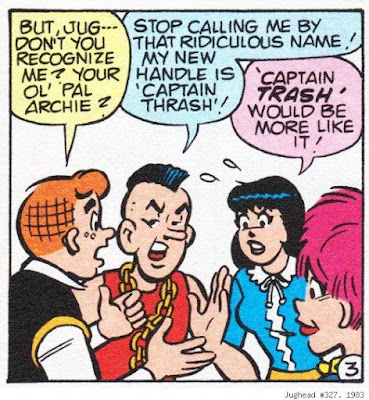HOLIDAY ROAD, OR, "LADY SINGS THE BLUES" BY BILLIE HOLIDAY
I was walking through the biography stacks looking for inspiration when I came across "Lady Sings the Blues." "I probably should have read that at some point in my life," I thought. "I think I saw the movie on HBO as a kid, only because Lando Calrissian was in it and the R rating gave me hopes of nudity."
I knew a little bit about Billie Holiday. I knew the songs. I knew about "Strange Fruit" and heroin and her early death, and that was about it. I didn't know the story behind "Lady Sings the Blues," which is almost as interesting as the book itself.
There are questions as to how much Holiday actually contributed to her memoir. She claimed at one point she not only didn't write it, she didn't even read it. Her co-writer, freelancer William Dufty has been described as compiling the book from previously published interviews, transcribing the book from extensive interview sessions and just making the whole thing up.
That doesn't really take anything away from reading "Lady Sings the Blues" in 2020. Holiday's voice (or her imagined voice) shines through the book, beginning with the opening sentence "Mom and Pop were just a couple of kids when they got married. He was eighteen, she was sixteen, and I was three." Lines like "I joined Count Basie's band to make a little money and see the world. For almost two years I didn't see anything but the inside of a Blue Goose bus, and I never got to send home a quarter," or "Don't tell me about those pioneer chicks hitting the trail in those slip-covered wagons with the hills full of redskins. I'm the girl who went West in 1937 with sixteen white cats, Artie Shaw and his Rolls-Royce - and the hills were full of white crackers," even if they're exaggerated or completely made up are joys to read.
Holiday had a hard, hard life, and while she describes the trials she went through (a fancy writer might call them Dickensian), there seems to be a slight remove, although this could just be comparing a book from the mid '50s to today's memoirs. While her early death turned her into a tragic figure, she was also a fighter - railing against the pervasive racism both in both the north and the south as well as the drug policies that seemed designed to keep the poor and people of color in their places.
Sex/Drugs/Bad Behavior
6/10. There's booze and sex and drugs, but it's not really described as much as a more modern memoir would.
Opens in Media res?
No. Maybe they hadn't invented that trick yet?
Namedropping?
I should probably retire this section, since nobody's ever gonna come close to Moby. But lots of famous people pop up. Duke Ellington, Count Basie, Orson Welles (who she had an affair with, but doesn't mention in the book), Joe Louis, and a Clark Gable punching a dude all make appearances.
Percentage of Music in the Bio
Let's say 60 percent. Holiday (or the ghostwriter) effectively paints the New York jazz scene of the '30s and '40s, and there's a great chapter on her feelings on performing "Strange Fruit."
Buy, Borrow from the Library, or Pass
Definitely borrow. Don't you think you need to know more about Billie Holiday?



Comments
Post a Comment